smooth sumac (Rhus glabra)
Anacardiaceae, the cashew family
How to recognize smooth sumac. This is a distinctive tall shrub that grows in dense patches, spreading clonally. The stems are stout, completely smooth (glabrous) with a powdery bloom (glaucous), and bear alternately arranged pinnately compound leaves that are long and narrow, with coarsely serrate leaflets.
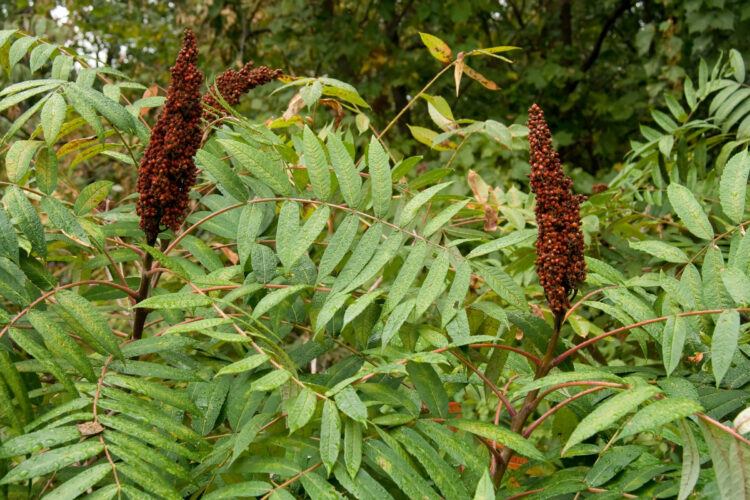
Smooth sumac in late September.
Smooth sumac leaflets (as well as those of staghorn sumac, Rhus typhina) are coarsely serrate (toothed), a useful differentiation from the superficially similar walnut (the leaflets of which minutely serrate) and tree of heaven (leaflets entire-margined).
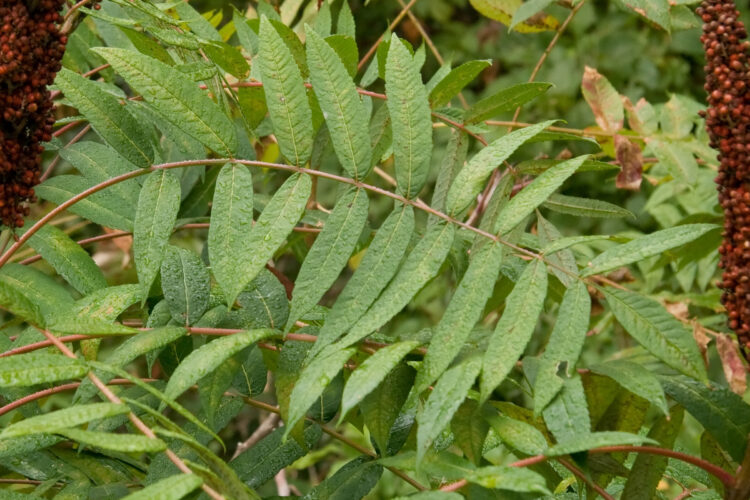
Smooth sumac leaves are pinnately compound with coarsely toothed leaflets.
The branches are indeed smooth, and have a powdery bloom that can be rubbed off.
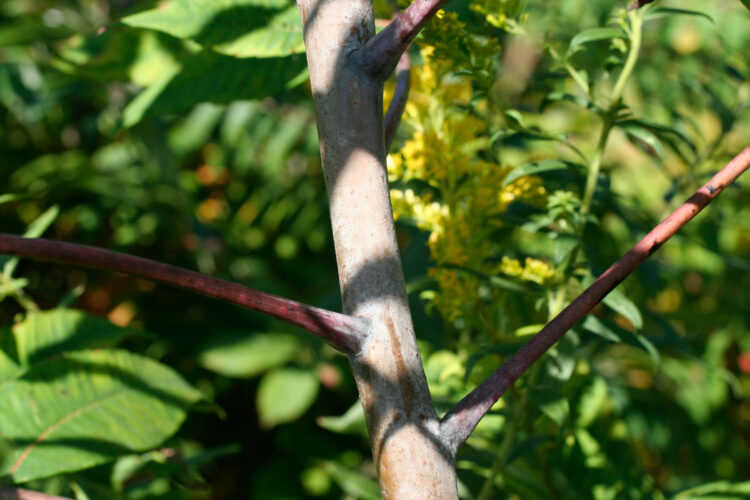
Smooth sumac branch is glaucous.
Flowers and fruits. Sumac flowers are small and greenish, displayed in tightly branched clusters (panicles). While the species is sometimes said to be “polygamo-dioecious,” i.e., bearing on one plants flowers partly perfect and partly staminate, and on another plant flowers partly perfect and partly pistillate) apparently they are functionally dioecious (separate male and female individuals). Here are smooth sumac flowers seen on a recent mid-June foray to a dry hillside in Adams County.
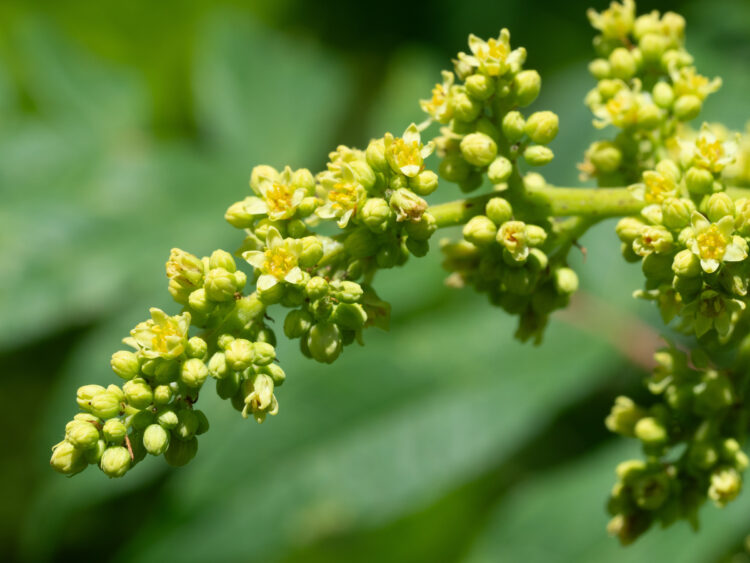
Smooth sumac flowers.
The flowers mature into red drupes sparsely covered with short hairs that lie flat against the fruits (compare with staghorm sumac’s more dense and erect hairs).

Smooth sumac fruits are covered in sparse short hairs.
In the winter. Staghorn sumac twigs are stout, hairless.

Smooth sumac winter twig.
Where to find smooth sumac. E. Lucy Braun, in The Woody Plants of Ohio (1961, 1989; The Ohio State University Press) tells us that that smooth sumac has a “Range more extensive than that of any other sumac–from Maine and Quebec westward to British Columbia and southward to Florida, Texas and Mexico. Our most abundanr sumac, occuring throughout Ohio. A showy species in summer or fall, its fruit brighter than that of the staghorn sumac.”
Scanned Image from an Old Book
(Flora of West Virginia, by P.D. Strausbaugh and Earl L. Core)

Ooh ooh. I have a question!
You mentioned staghorn sumac, Rhus typhina. Are there any other Rhus sumacs in Ohio?
Indeed there are two of them: winged sumac (Rhus copallina) and fragrant sumac (Rhus aromatica).
Winged sumac is a tall shrub that E. Lucy Braun states in Ohio is “largely confined to the unglaciated Appalachian Plateau, and acid soils of the flats of southwestern Ohio (Illinoian Till Plain) and Lake Area of northern Ohio.” It has the leaf petiole and rachis winged-margined.
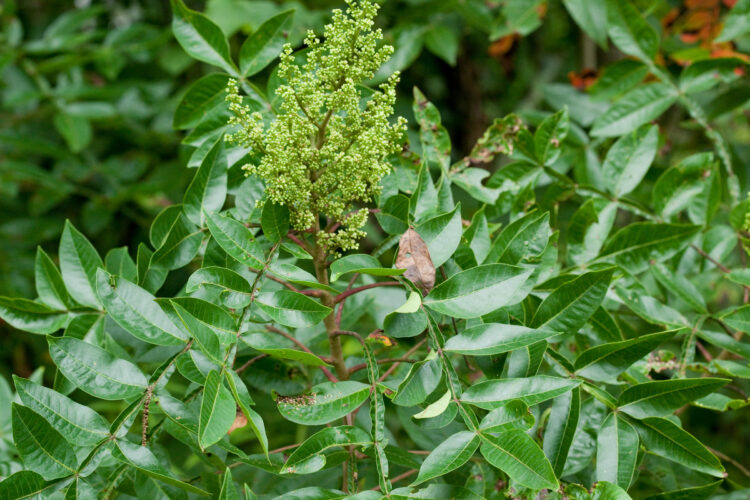
Winged sumac in early August.
Fragrant sumac is, according to E. Lucy Braun, an “attractive shrub of dry gravelly or rocky banks (calcareous) and sand dunes.” With its 3 leaflets confusion with poison ivy is possible, but note the smaller stalkless leaflets and bright red long-hairy fruits.

Fragrant sumac
